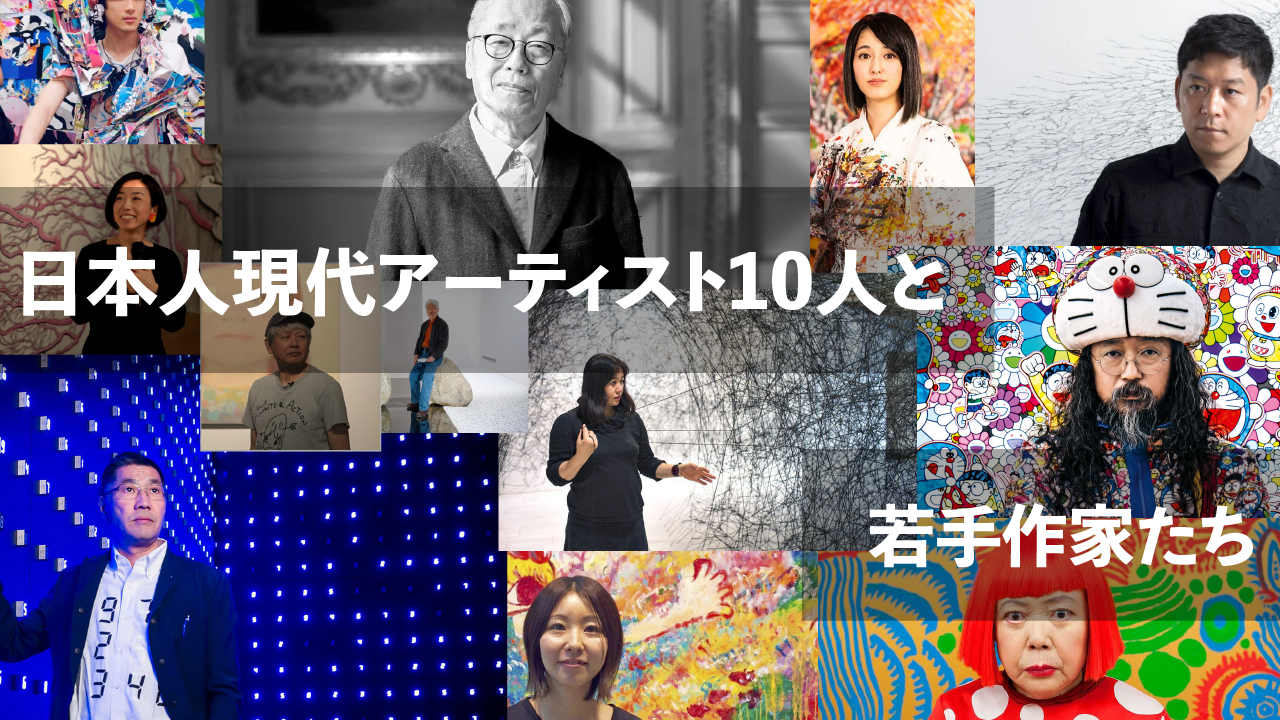
Contemporary art has become a hot topic in Japan with exhibitions by Banksy, Damien Hirst, and others. You may have heard news of high bids at auctions.
Japanese contemporary art is now attracting a lot of attention in the art scene.
This section introduces Japanese contemporary artists active in Japan and abroad, from masters to up-and-coming young artists of note.
Ten leading Japanese contemporary art masters
1) Yayoi Kusama, the world's most influential "Queen of Contemporary Art
Yayoi Kusama, known as the "Queen of Polka Dots," is one of the most highly acclaimed contemporary Japanese artists in the world. Her activities transcend genres, ranging from painting to sculpture to performance.
Due to a complicated family environment, Kusama suffered from hallucinations from an early age, in which everything she saw seemed to be covered in polka dots, and to escape this fear, she began painting fantastic pictures with polka dots and mesh patterns.
After moving to the U.S. at the age of 28, Kusama was first acclaimed for her "Infinite Web" series. The "nets" that cover the screen in a tight mesh. This work was an expression of the hallucinations that continued to haunt Kusama after she moved to the United States.
The "mesh" and "polka dots" became Kusama's icons, and she later developed motifs such as "pumpkins" and "hats" that interweave these motifs.
In 2016, she was named one of TIME magazine's "100 Most Influential People in the World" and was awarded the Order of Culture. She is truly the "Queen of Contemporary Art.
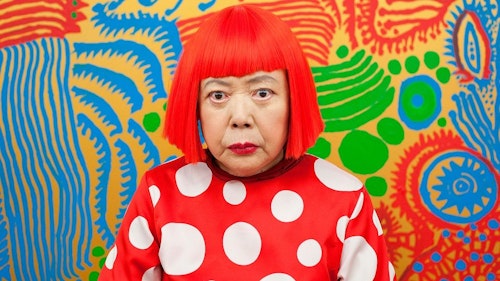
Yayoi Kusama's representative work: "Pumpkin
Suffering from hallucinations and auditory hallucinations since she was a child, Kusama created paintings of the polka-dot patterns she saw in her vision.
She says that as she desperately painted what she saw and felt, her fears and painful feelings eased.
Kusama has used polka dots throughout her work throughout her life, and in "Pumpkin," she has combined them with another iconic motif in her work, the pumpkin, to create a work that is uniquely Yayoi Kusama.
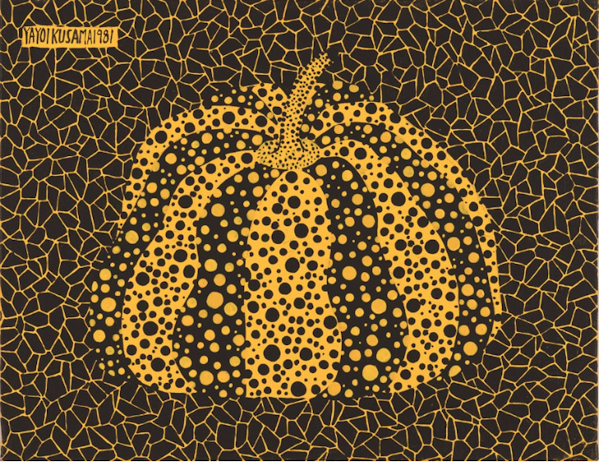
1981, acrylic on canvas
(2) Yoshitomo Nara, Japanese neo-pop painter attracting international attention
The girl is drawn in a simplified, cute illustration style. But her expression seems to be staring at us. The child is a mixture of "cuteness and purity" and "loneliness and dissatisfaction. With this motif, Yoshitomo Nara attracted international attention as a standard-bearer of a new type of figurative painting.
His works have been exhibited successfully in solo shows around the world and are in the collections of the Museum of Modern Art in New York and other world-class museums.
In addition to acrylic paintings, he also develops improvisational drawings and sculptures.
Along with "Children," another of Yoshitomo Nara's representative motifs is "Dogs.
His 8.5-meter-high outdoor installation "Aomori Dog" at the Aomori Museum of Art in his native Aomori attracted a lot of attention with its concept.
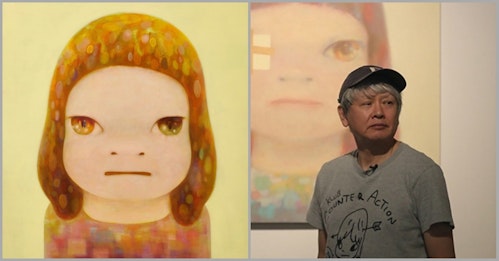
Yoshitomo Nara's signature work: "Knife Behind Buck
It became a topic of conversation in 2019 when it was sold at a Hong Kong Sotheby's auction for $24.9 million (about 2.7 billion yen), his highest bid at the time.
It is one of a series of paintings of a girl that expresses his unique worldview, characterized by the way the girl stares at him, which is cute and at the same time somehow frightening.
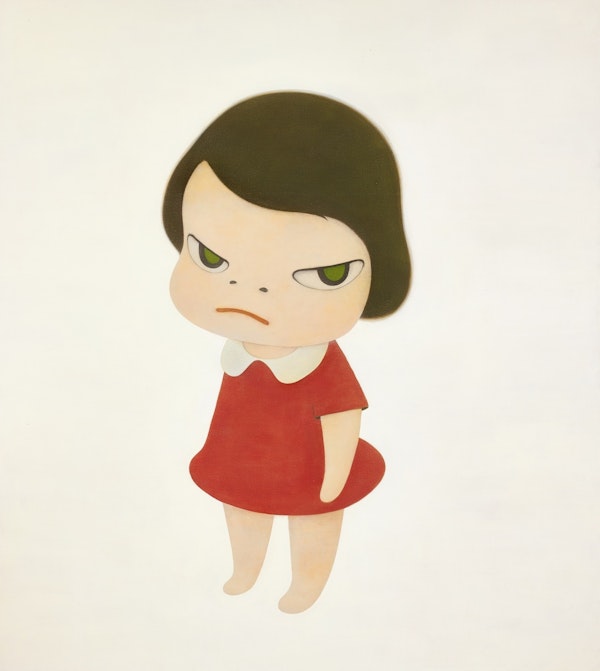
2000, acrylic on canvas
3) Takashi Murakami, a contemporary painter who advocates "superflat" from the tradition of Japanese painting
Takashi Murakami is a leading figure in the field of contemporary Japanese art, and is currently one of the most highly acclaimed Japanese artists abroad.
He advocates the theory of "Superflat" based on his awareness of the problem of establishing values that originate in Japan, rather than Western values.
Finding in the otaku culture of Japanese manga and anime a sense of flatness, bold composition, deformation, and vivid colors influenced by Ukiyoe and Rimpa school paintings, he has created a series of works using otaku subjects, a subculture that includes anime and figures.
Another characteristic of his work is the recurring appearance of the same motifs, such as "Mr. DOB" and "flowers.
His works have always created a buzz around the world, including a solo exhibition at the Palace of Versailles.
He also devotes himself to producing young artists.
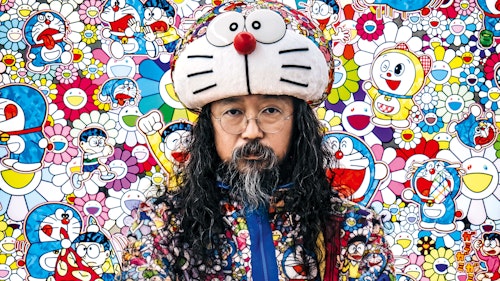
Takashi Murakami's representative work: "Five Hundred Arhats
In 2012, Murakami unveiled the 100-meter-long painting "The Five Hundred Arhats. It is no exaggeration to say that it is one of the largest works of art in the world.
This work was first exhibited in Doha as a tribute to Qatar, which was quick to extend a helping hand in the wake of the Great East Japan Earthquake.
It has since been exhibited in Japan, and attempts the best reading of Japanese art, which has been at the center of Murakami's interest since the beginning of his career.
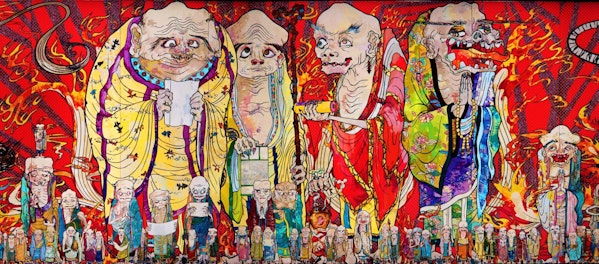
2012, acrylic on canvas
4) Hiroshi Sugimoto, Japanese photographer who sublimated "photography" into contemporary art
Hiroshi Sugimoto is said to be one of the artists who elevated photography from a recording medium to a means of expression in contemporary art. His works, created with well-thought-out concepts and solid techniques, are highly acclaimed around the world.
The main theme behind his works is "time. When you have a sense of manipulating time, the oldest things change into the newest things. That is the basis of my creation. These are Sugimoto's words.
In "Diorama," Sugimoto's first highly acclaimed work, a diorama that is a work of art is made to look as if it were a real scene from a timeless, ancient world.
In "In-ei Raisan," Sugimoto captured the process of a single Japanese candle burning out in the darkness.
In recent years, he has expanded his creative field to include not only photography but also architecture and stage design.
In 2012, he was awarded the Officier de l'Ordre des Arts et des Lettres of France. In 2017, he was selected as a Person of Cultural Merit in Japan, and is one of Japan's leading contemporary artists.
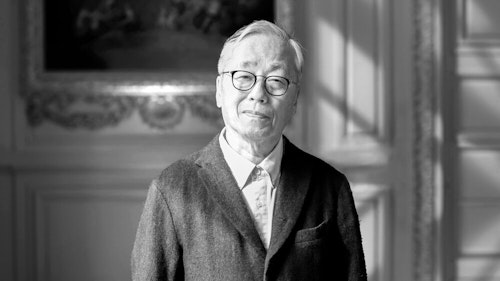
Hiroshi Sugimoto's representative works: "Seascape Series
These works depict seascapes from around the world, photographed with a large-format camera using long exposures.
The monochrome worldview and mysterious scenes that seem to lose their sense of time and appear both ancient and futuristic are the best reflection of his rigorous artistic philosophy.
We tend to think of photography as an expression of a moment captured in time, but in Sugimoto's photographic works, eternity seems to be locked in.
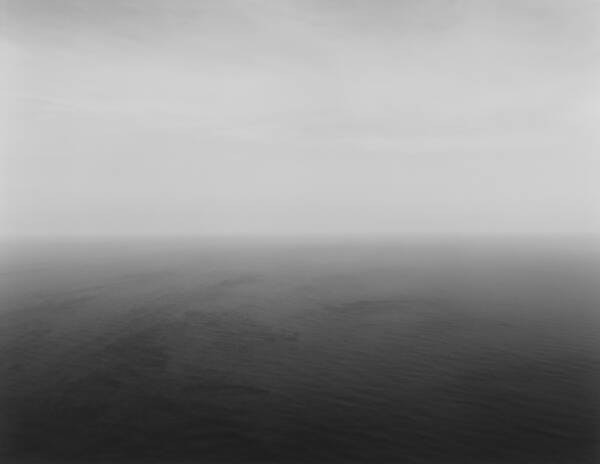
Circa 1980-, Photographs
5) Famous contemporary artist Tatsuo Miyajima expressing "eternity" using LEDs
Thousands of LED digital counters placed in a dark room. Each one simply ticks away numbers from "1" to "9" at different speeds. The number "0" is never displayed, and the LEDs go dark. This means "death" and expresses "reincarnation," the eternal repetition of life and death.
Tatsuo Miyajima's work, "It keeps changing, it has a relationship with everything, it goes on forever," can be said to be Miyajima's concept itself.
Tatsuo Miyajima's work, which expresses the concept of "time" with oriental thought and modern technology, has received international acclaim and has been exhibited in more than 250 locations in 30 countries.
In the 2000s, he not only presented his works but also advocated the concept of "Art in You.
He taught that all people have art inside them in different ways, and that the experience of art is an indispensable part of human life.
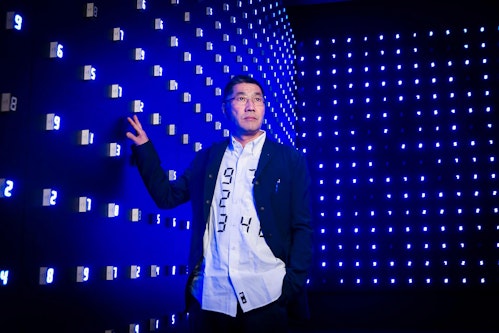
Tatsuo Miyajima's representative work: "Counter Void
On a translucent glass screen 5 meters high and 50 meters long, giant digital numbers float, each counting down at a different speed.
In Japan, this work was unveiled on the exterior wall of TV Asahi's building on Keyakizaka-dori in Roppongi Hills, creating quite a sensation.
Since March 13, 2011, immediately after the Great East Japan Earthquake, the lights have been turned off by Miyajima himself to save electricity and repose the souls of the dead, and have only been turned on again for a few projects and events.
It is an action that is typical of Miyajima, who values the idea of a work of art made for the sake of people, rather than a work of art for the sake of art.

Neon tubes, glass, ICs, aluminum, electric wires, etc., 2003
6) Lee Ufan, representative artist of the "Mono-ha" school
Lee Ufan,born in Korea and based in Japan,attracted international attention from the late 1960s to the 1970s as a representative artist of the "Mono-ha" art movement in Japan.
Against the backdrop of criticism of rapid industrialization and mass production during Japan's period of rapid economic growth, Lee Ufan created works of art using natural materials such as wood and stone and industrial products such as paper, iron, and glass with little or no modification, presenting new relationships between "stone" and "glass" and other "material" materials.
The title of Lee's sculptures, "Relational Term," is based on the idea that "everything exists through its relationship with the world, and nothing exists by itself," and his work with an awareness of mutual relationships has remained consistent since then.
The "Mono-ha" school is currently being re-evaluated in the American and Asian art scenes.
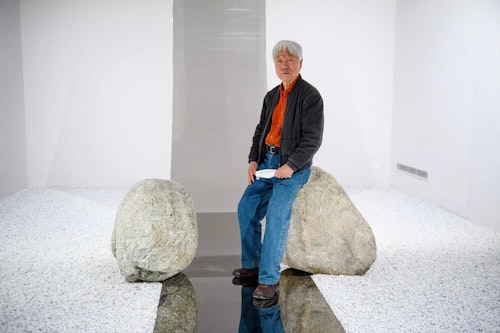
Lee Ufan's representative work: "From the Line," 1974
In his series of paintings, "More than a Line" and "More than a Dot," which have become synonymous with his work, Lee Ufan embodies the very simple act of drawing a line or making a dot.
His philosophy, brewed by both Western and Eastern philosophies, is thus a primitive act of representation by discarding each act to the maximum.
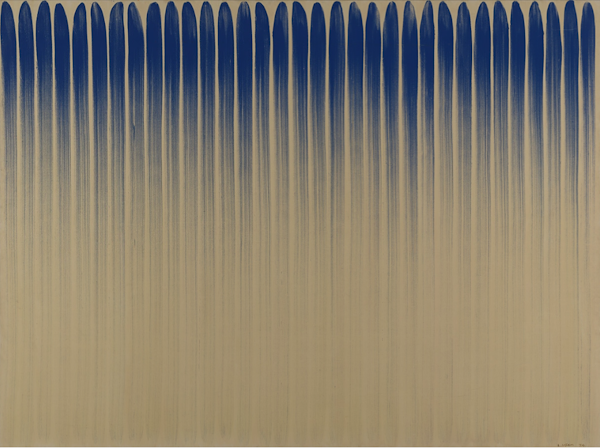
Rock color on canvas
7) Sculptor Kohei Nawa with the concept of "PixCell
Kohei Nawa, who focuses on the "skin" of sculpture as an interface to the senses of touch and sight, has attracted attention in Japan and abroad for his attempt to perceive the world through "cells" through the concept of "PixCell," a fusion of the words "pixel" and "cell.
In the "PixCell" series, the skin of an object such as a deer hide is covered with transparent spheres such as glass beads, replacing its existence with that of a "cell" (cell or grain).
The intention is that the cells will cause the object to lose its sense of reality and become perceived as an image.
Kohei Nawa flexibly interprets the definition of sculpture and pursues a new way of sculpture by using various materials and the latest technology.
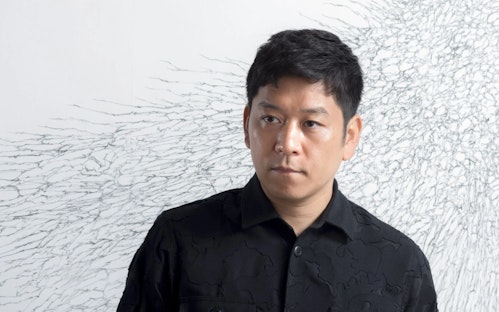
Representative works by Kohei Nawa: "PixCell-Deer#52," 2018.
A new representative work was released in 2018 to coincide with his solo exhibition at the Towada Museum of Contemporary Art.
An assemblage in which only the surface texture is extremely magnified. It can be read as a direct representation of the information society we live in today.
It vividly contrasts the way humans perceive the world with the way the world is perceived through the lens of a camera.
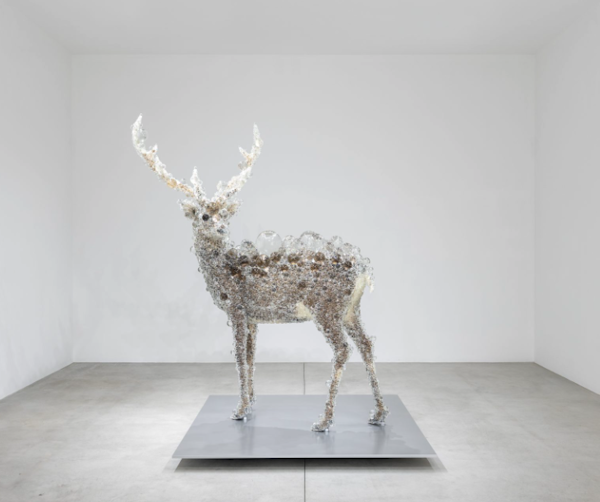
Mixed media
8) Contemporary art expressing the formless: Chiharu Shiota
Countless keys tied to a red thread that fills the space, countless suitcases, and a boat.
Berlin-based Chiharu Shiota is known worldwide for her installations expressing uncertain and invisible things such as memories, anxieties, and dreams.
Her works express the process of facing and continuing to search for "life and death," the fundamental human issues of "what it means to live" and "what existence is," based on her own experience of battling illness.
The red thread is the color of life and the thread that connects people to each other. The boat is a guide to a world yet to be seen, and it is also an object that stands side by side with death. Viewers are drawn into the world of Chiharu Shiota through the universal theme of "life and death.
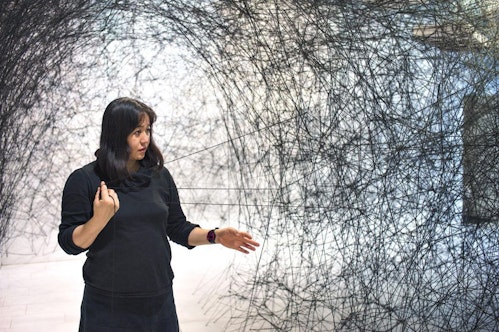
Representative work by Chiharu Shiota: "Uncertain Journey," 2021
This installation work is made with a boat made of iron frames and a large number of red threads, which are synonymous with the artist's name.
Once you actually enter the space of Shiota's work, you will be overwhelmed by the paranoid passion of her work. Along with the symbolic boats, the threads representing blood flow and the energy of life create a dazzling world in which you feel as if you have entered one giant life tissue. At the same time, you will also feel her enveloping and warm gaze.
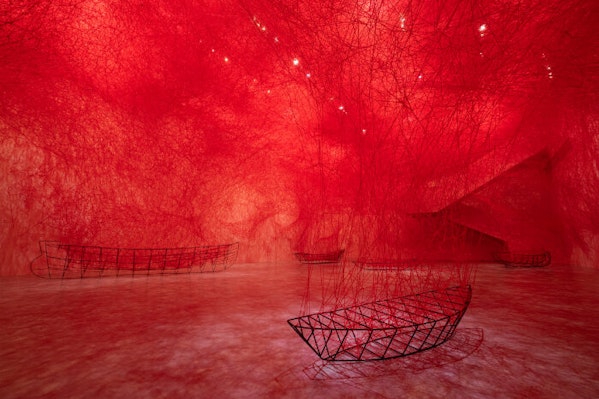
Iron frame, red yarn
(9) TABaimo, a female artist who expresses contemporary Japan with her unique video installations
A "video installation" is a work of art that uses video as its central means of expression and creates a visual effect in the surrounding space, allowing the viewer to experience the entire space as a work of art.
Sokaimo, who says that "art is something that smells of daily life and is realistic," depicts universal themes such as "kitchens," "pedestrian crossings," "apartment complexes," and "public toilets," which are everyday scenes in contemporary Japan, with hand-drawn line drawings that have an ukiyo-e-like touch.
Sokaimo's method of expressing the complex inner world of contemporary Japan with a unique expression that has an analog feel and a certain grotesque quality has been highly acclaimed internationally, and he is a remarkable artist who is constantly receiving offers for collaboration both domestically and internationally.
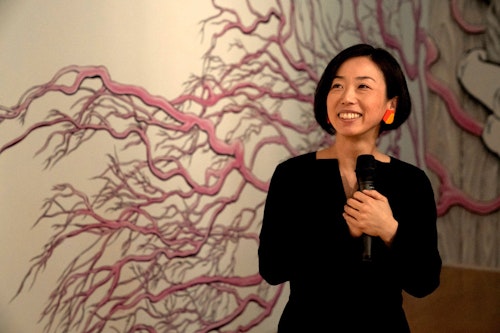
Sokaimo's representative work: "dolefullhouse" (2007)
In this work, presented at the Venice International Biennale in the same year, a dollhouse, a human hand, an octopus, blood vessels...motifs that do not seem to come together in one place are gathered to create a video that is full of meaning.
The discomfort and surrealism of contemporary Japanese society that I have felt as a baby boomer is visualized with a unique taste.
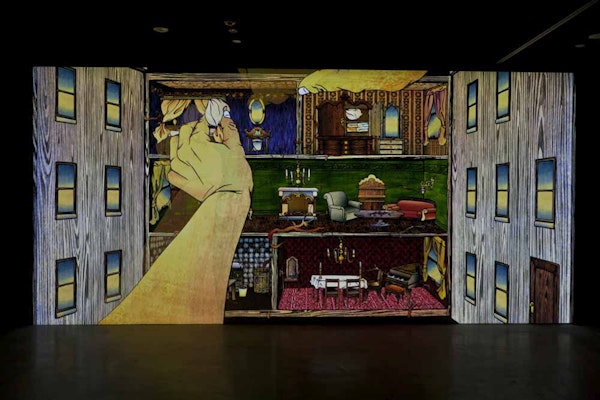
(10) Ayako Rokkaku flutters around the world with her dynamic style of painting with her "hands.
Ayako Rokkaku's unique style of drawing directly on cardboard or canvas with her fingers, without using a paintbrush, produces an elongated and rhythmical touch. Along with her signature motif of "a girl with big eyes," the artist depicts the murmur of the city, wind, flowers, and sounds in colorful patterns.
Her pop, flamboyant, dynamic, and energetic style is popular both in Japan and abroad, and she has been highly sought after at major auctions overseas.
The axis of his artwork is "to put positive energy in his works.
He says that this desire became stronger after the Great East Japan Earthquake in 2011. The overlapping of colors and the presence of the girl have become larger, and the paintings have become more life-like.
His ranking in the world artist rankings has also skyrocketed. She is an artist riding a wave right now.
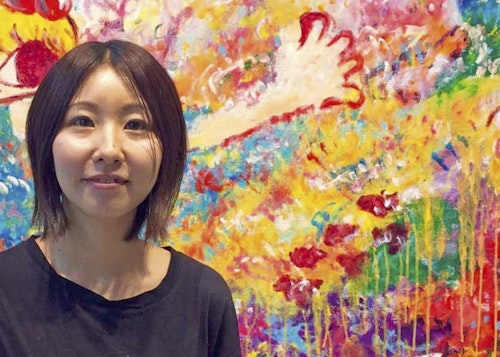
Ayako Rokkaku's representative work: "Untitled," 2020
In her typical free-spirited colors, we can see a girl with a lively expression as if she is glaring at us.
By placing the paint directly on the canvas with her hand rather than with a brush, a sense of raw life is preserved in the painting.
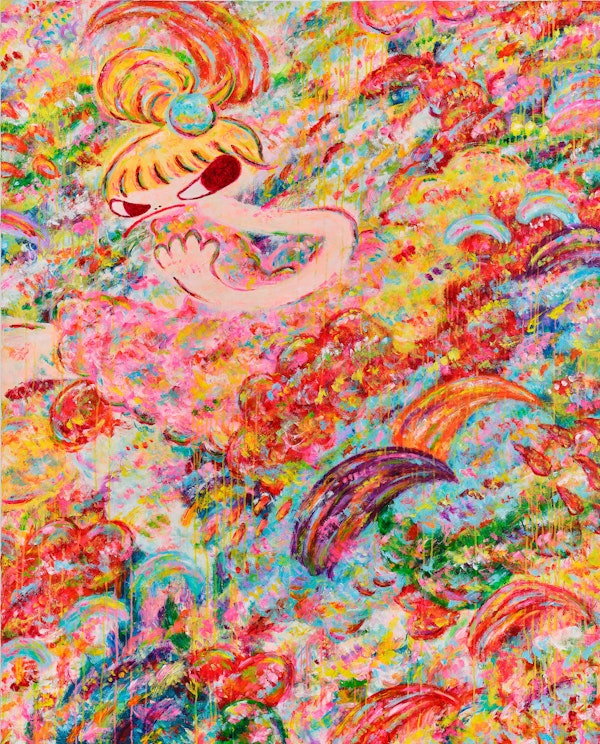
Acrylic on canvas
Notable Up-and-coming Young Japanese Contemporary Artists
Yamato Chikara to the World: Young Female Artist Miu Komatsu
Wide-open eyes, sharp fangs. The bold touch of the artist's work fills the screen with oddly shaped objects.
Miu Komatsu pursues her own unique expression using motifs from traditional Japanese culture, such as the gods and beasts that have appeared in mythology since ancient times, and is especially known for her "komainu" (guardian dogs) motifs.
The foundation of her work is "Yamato-ryoku" (the power of Yamato). What Komatsu means by "Yamato-ryoku" is not so-called "Japanese-ness. Yamato-ryoku" is the ability to fuse various different ideas and existences and bring them together.
She is also an artist who is attracting attention for her production team structure and promotion with an eye to overseas markets.
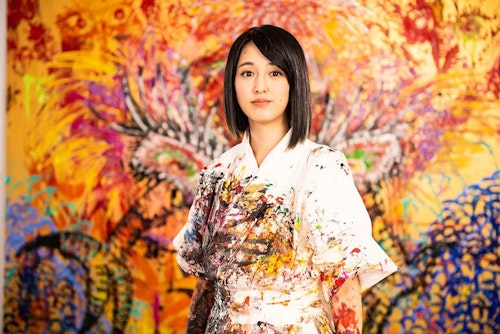
Representative work by Miu Komatsu: "Everybody Becomes a Dragon," 2018
A large dragon with eyes as glaring as the sun rises in the center of the screen along with komainu (guardian dogs).
Other sacred creatures, such as birds, are also depicted in the work. The unique worldview of Japan, in which nature and animals are regarded as deities, is expressed in extreme colors.
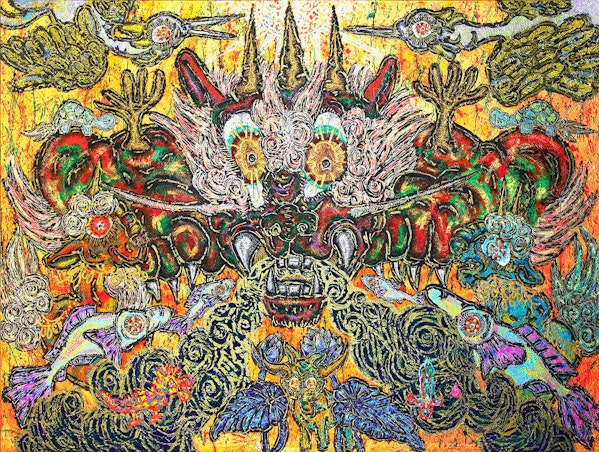
Canvas, acrylic, gofun
Kazuki Umezawa, a young Japanese artist whose paintings confront the digital world
Kazuki Umezawa, born in 1985, is one of the most popular young artists in the world today.
He collects a large number of existing images of various characters scattered all over the Internet, reconstructs them by copying and pasting, and then adds his own additions to them, creating a kind of chaotic work. In other words, it is a collage of illustrations and images using digital technology.
Umezawa's works, which seem to move back and forth between the digital world and the real world, have been supported by Takashi Murakami, Hiroki Azuma, and others, and have attracted much attention.
In 2011, he incorporated photographs of rubble from the earthquake disaster into his works, always recognizing reality through the Internet, which is a characteristic of Umezawa's work as reality in a virtual space.
How will his works, which cannot be captured within the framework of conventional art, change in the future? Such interest and anticipation are also part of the appeal of Umezawa's work.
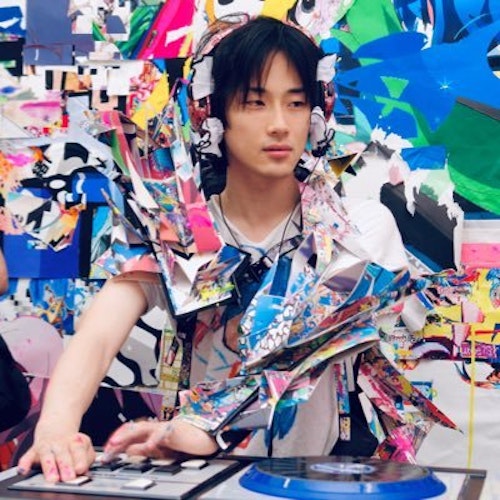
Kazuki Umezawa's representative work: "Particles of Image -Twelve Style-," 2021
Roughness, or image particles, that become visible when a digital image is enlarged.
Feeling a sense of reality in these "pixels," Umezawa creates minute bumps and unevenness when he prints the chaotic collection of colors that is an accumulation of the remnants of various digital expressions.
The motifs he has painted so far are confined to a single screen, blurring the boundaries between what is real and what is digital.
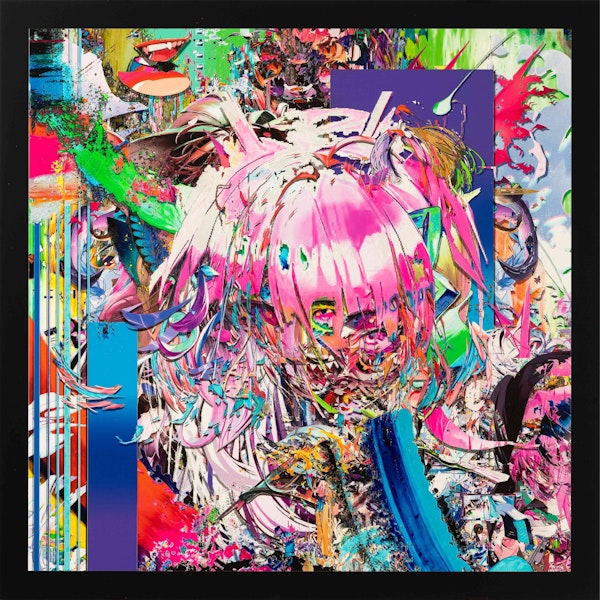
Acrylic on UV curable resin (StareReap 2.5 print)
TRiCERA Curator's Recommendation!
Five young Japanese contemporary artists to watch out for in the future
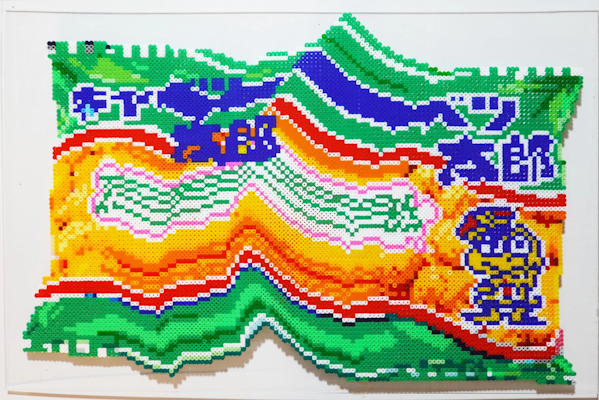
Yuka Numata is an artist from the generation of digital natives who use the Internet on a daily basis.
Numata imagines and creates "the divergence between reality and the digital world and its future. She uses analog techniques to replace digital images that have been edited and processed on a computer with information based on research into the characteristics of the times, idiosyncrasies, and generation of today, in an attempt to transcend dimensions in the real world.
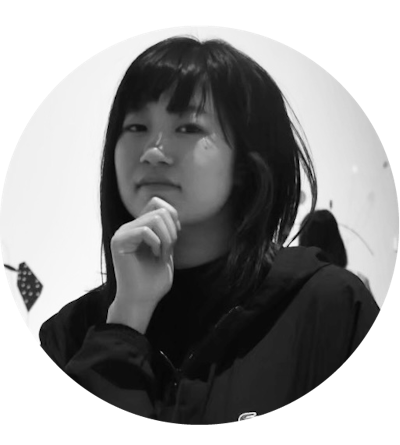
Yuka Numata
Born in 1992 in Chiba, Japan, Yuka Numata studied at the Academy of Fine Arts Vienna, 2019-2020, and completed her graduate studies at Tokyo National University of Fine Arts and Music, 2022.
She won the Mr. O Memorial Prize in 2018 and the A-TOM ART AWARD Grand Prix in 2019. Numerous group and solo exhibitions.

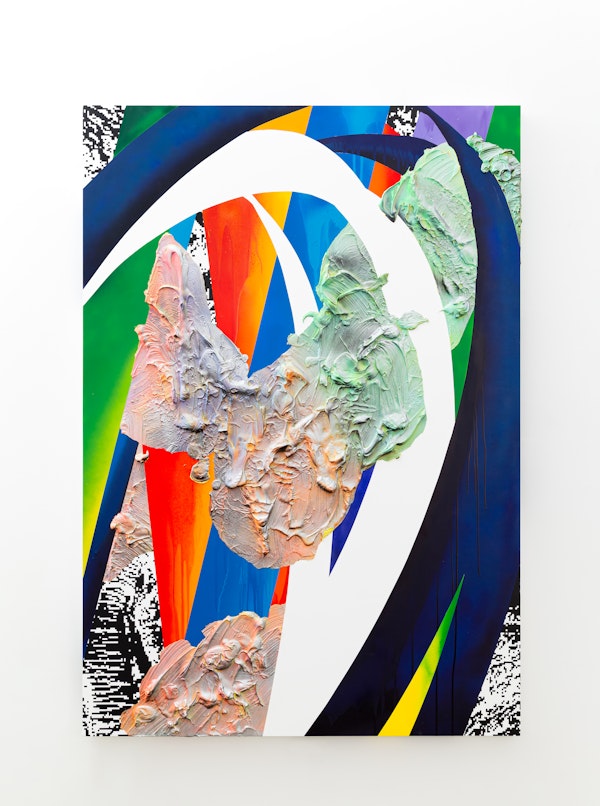
Saki Matsumura' s works are characterized by the collision and distortion created by combining multiple techniques and colors.
Her continuous creation of never-before-seen landscapes on canvas creates a fresh sensation in the eyes of those of us who are bored with our daily lives. She achieves this act, which only a painter can do, by combining the raw texture of paint with flat digital textures.
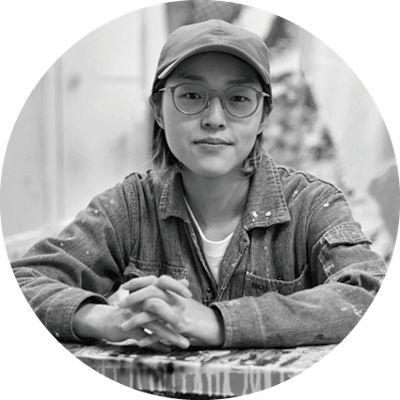
Sakiki Matsumura
Born in Nagano, Japan in 1993
Graduated from Kyoto University of Art and Design, Graduate School of Painting in 2017
Currently based in Kyoto, Japan

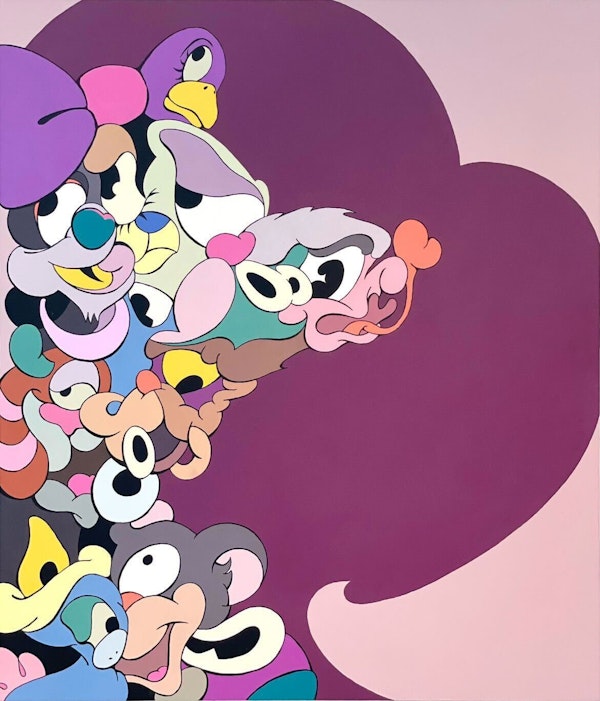
Maoka Ueda uses cartoon characters to depict the regular and beautiful laws of nature.
The characters, which spread out in a radial pattern, change their expressions depending on the viewer's angle of the canvas and whether they are seen from a close-up or a close-down perspective.
Just as a single object can be viewed in a variety of ways by interpreting it from multiple perspectives, the characters in the paintings create a variety of expressions depending on how they are viewed.
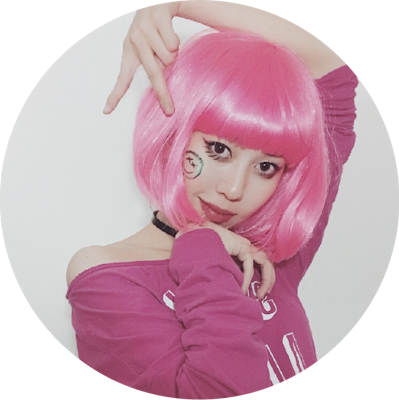
Maoka Ueda studied art and design in London for 5 years in the Foundation Course at Central Saint Martins, University of the Arts London, and in the Graphic Design and Communication Department at Chelsea College of Arts.
She has exhibited and won many awards in Japan since 2019.

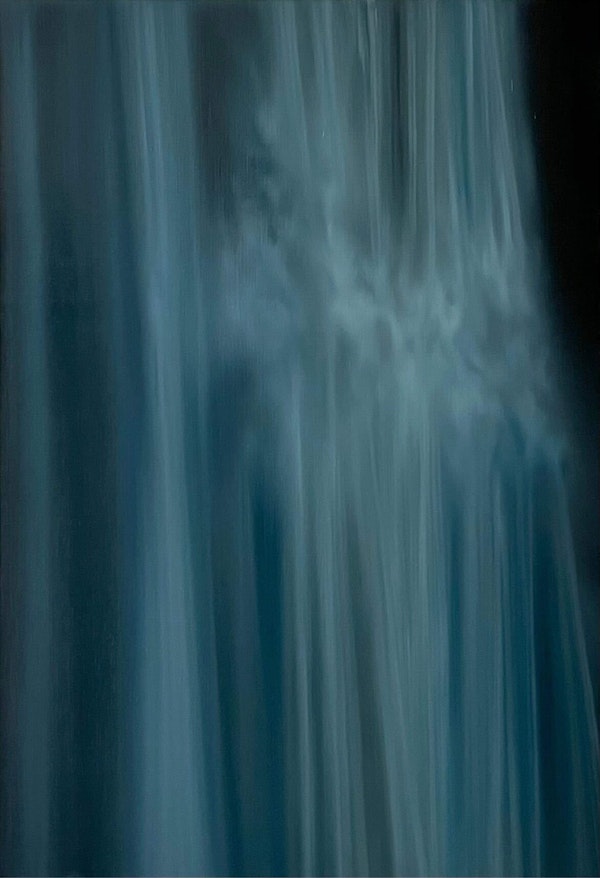
For Takaya, painting is a medium through which she preserves the elusive infinity that exists before her eyes, or the life time that echoes that infinity, before it decays in her own perception.
How can the abyss that lurks behind existence be kept metaphysical through the use of color?
To explore this question, the artist repeatedly experiments with color and perception, and continues to experiment with two-dimensional expression in her own unique way.

Eien Takaya
Artist, painter, and director of WHYNOT.
Born in Tokyo in 1992. Currently based in Tokyo. Her paintings, characterized by fluid lines and mysterious colors, are created based on a cross-disciplinary consideration of space, time, and existence. Takaya positions painting as a metaphysical inquiry into "what is existence," while at the same time exploring experimental drawing methods on virtual reality. 2019-2012, Takaya will be the president of WHYNOT, an artist-run space for exchange between artists and individuals working in the field of art. He is continuously working to build solidarity and community through art.

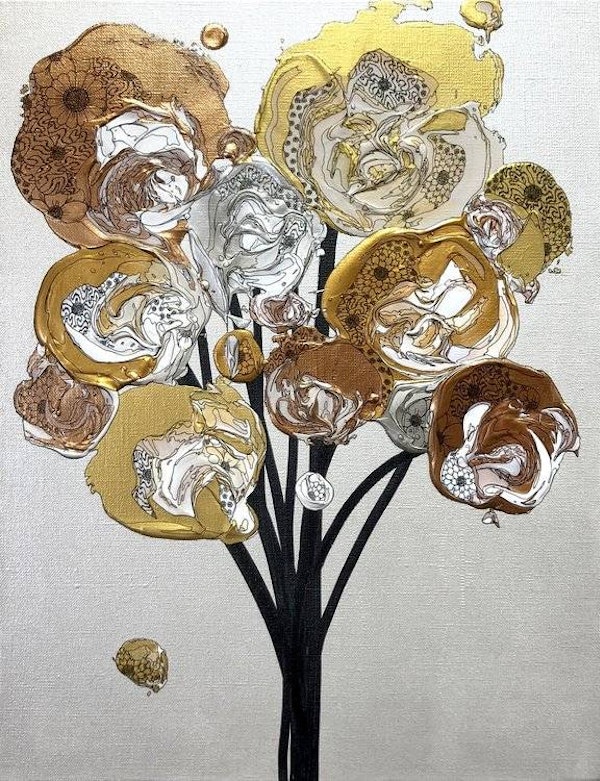
Yuta Okuda graduated from Istituto Marangoni in London with a bachelor's degree in fashion design and worked as a fashion designer for the world-renowned Japanese fashion brand TAKEO KIKUCHI.
After leaving TAKEO KIKUCHI, he started his career as an artist. He is known for his works depicting the beauty of nature, such as the food chain, using flowers and creatures as motifs with delicate lines and blurring.
Also, the combination of conflicting motifs, such as life and death, beauty and spear, is a major theme of his work.
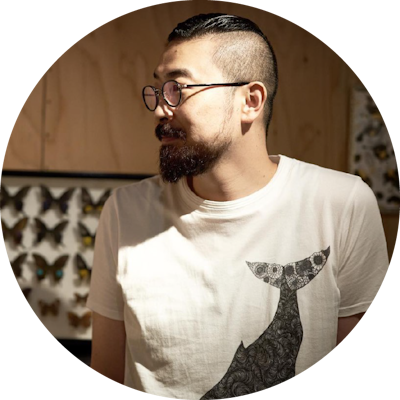
Graduated from ISTITUTO MARANGONI (London, UK) in 2010 with a master's degree in fashion design.
2012 - 2016 - Worked as a designer at fashion brand TAKEO KIKUCHI.
2016 - After leaving the company, he resumed his activities as an artist "yutaokuda" instead of a designer.
2017 - Formed an art unit "y u e r u" by "yutaokuda" and "moon frog".

Encounter with art that shakes your heart
You may find a trend of what you like in the artworks you are interested in, or you may fall in love at first sight while looking at a number of artworks.
The power of "art" to move your heart is here.
View the latest artworks
For inquiries about artwork, please contact us here.
If you have any questions about the artist or requests for custom-made work, please feel free to contact us through our official LINE.